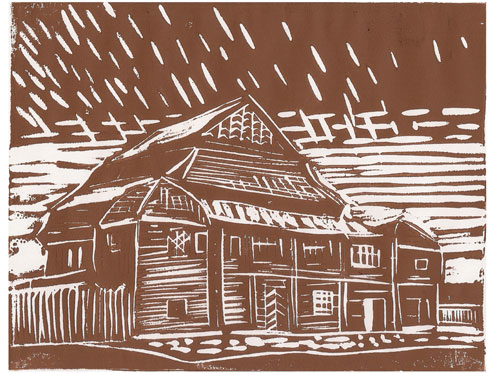Lost Treasures: The Wooden Synagogues of Eastern Europe The Artwork of Bill Farran
Hrodna, Belarus - Original Linocut
Hrodna, Belarus - Original Linocut
Yiddish name: Grodne
Previous name, country: Grodno, Poland
The Bialystok district, of which Hrodna became part, experienced a turbulent history. As a border region between Poles, Lithuanians, Russians, and Ukrainians, it was often subject to military attack. Jews played an incredibly significant role in city life as industrialists, merchants, craftsmen, owners of printing houses, doctors, and teachers. It was thought there was a special "Hrodna Aura," that was created by its cultured and intelligent population. Thus, Hrodna was one of the Jewish intellectual capitals of Europe.
According to Nazi records, 44,049 Hrodna Jews from the city and neighboring townlets were sent to the extermination camps. Early in 1942, Jewish underground resistance, defense, and Zionist movements formed. Approximately 180 Jews remained hidden in the city and district until the town was liberated by the Soviet Army on July 14, 1944. Following its liberation, about 2,000 Jews resettled in Hrodna. In the 1990s the revived community started renovating the stone synagogue and in the early 2000’s had a resident Chabad rabbi.
Purchase a print
Original linocut prints are 8x10 inches, and are available either unmatted or in an 11x14 matte.
I also offer matted 5x7 digital prints. These prints are created from high-res digital images and come in an 8x10 matte.
